How Sweet it is to Eat Real Food
The Nature of Rest
What the Bible and Creation Teach Us About Sabbath Living
Intentional Parenting
Nature Studies
Apologetics
Adventure
Free Resource
Entrepreneurship
Homeschooling
Faith
Books
Categories
Master Naturalist, Bible teacher, author, wife, and mama of four! Join our adventures of discovering God while adventuring in creation.
I'm Eryn
Hey there!


Listen Now
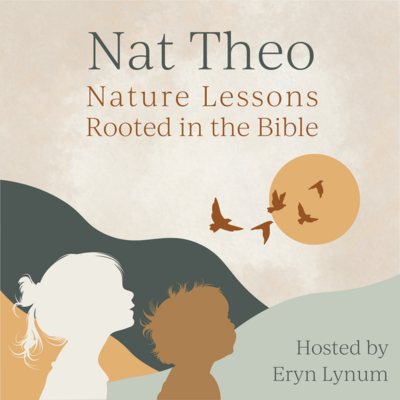





Order now
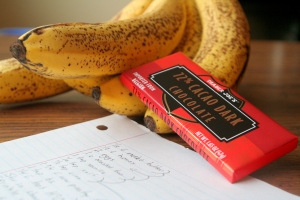

To me, the mental vision I conjure up upon hearing the term “health nut”, is one of a person giving up what they enjoy and settling for bland, boring foods in hopes that it will somehow benefit them. This is unexciting to me. One thing that quickly comes to mind is a complete boycott of sugar. I hear of people going on sugar fasts, or allowing themselves one small treat a week. Now, there’s nothing wrong with limiting sugar. In fact, according to government research, 100 years ago the average consumption of sugar was 8lbs per person per year. Fast forward 100 years to today, and the average sugar consumption is 76-100lb per person per year. Some research puts the number closer to 150lbs per person per year. It would all do us a little good to consider how much sugar we are allowing into our bodies. However, in our home, we’ve decided, like many other areas of our diet, to focus not so much on the quantity, but the quality.
A few weeks ago, when we resolved to launch ourselves into a 60-day undertaking of ridding processed foods from our diet, part of that has been an elimination of white sugar. When my sister questioned me on this, in regards to what I bake with now, I explained that we simply use pure cane, raw sugar, or honey. Now, let me throw out a caveat here: sugar is sugar. Whatever form it comes in, our bodies receive and process sugar much in the same manner. I figure, though, if we are going to be consuming the stuff (and we most definitely are….), then we should eat it in its natural state as a real food.
Without getting too scientific, let me try to explain this in simple terms. White sugar has been highly processed and stripped of its natural nutrients. White sugar may also contain additional unnatural ingredients that may be harmful to our bodies. Raw sugar, on the other hand, contains trace minerals from its original state as sugar cane, because it has been very minimally processed. The research surrounding benefits of eating raw sugar is rather controversial. Livestrong.com claims that there really is no benefit from eating raw sugar over white, and that raw sugar may simply be a marketing gimmick. Then on the other hand, ehow.com claims that raw sugar contains less calories than white (11 calories per tsp in raw compared to 16 calories per tsp in white), and contains many minerals, and excludes any unnatural chemicals, as I mentioned earlier. Believe what you will about the benefits of eating raw sugar in comparison with white. I hold to the belief as stated before that if you are going to consume sugar, consume it in its more natural, unrefined, (slightly) more nutritious state of rawness. Just a couple more reasons why we favor raw sugar: It has a much more robust flavor than white, with a hint of caramel taste (making it great in coffee, if you sweeten your coffee). As well, you can often find it sold as Fair Trade, which supports farmers in developing nations, sending more profits directly back to them. We buy our raw “turbinado” sugar from Trader Joes for about $3.49/lb (because it costs more than white sugar, we also use, and consume, less of it). I simply like the fact that it is a Fair Trade product from Malawi, a small country in Easter Africa which I spent a summer in when I was 14 on a short-term missions project. Somehow my little bag of sugar reconnects me to a place dear to my heart. Maybe that’s a silly excuse to eat sweets, oh well.
Honey has become, by far, our favorite sweetener. I use it primarily in baking. It is slightly sweeter than sugar itself, so when a recipe calls for sugar, and I substitute honey, I can actually use less than called for in the recipe, which is a good thing because honey is also significantly more expensive; we buy ours for about $5/lb. Another word on baking with honey: if a recipe calls for regular sugar, reduce oven temperatures by about 25 degrees, as honey browns quicker than sugar. Honey is best in its raw state (uncooked and unprocessed). When raw, it boasts of anti-bacterial, anti-fungal, and anti-viral qualities. Besides delicious, it helps fight illness! Honey is also best bought local (within 100 miles of home). Some studies claim that eating local honey can fend off, cure, or lessen symptoms of allergies. There has been recent hype over using a mixture of raw honey and ceylon cinnamon to fend off colds. We’ve been trying this for the past few weeks as the cold bug has been hovering over our house. It may have been in my head, but I thought that the little spoonfuls of honey-cinnamon left me feeling less cold symptoms within a couple of hours of eating it. Zeke didn’t seem to mind at all the delicious remedy either; much tastier than that cherry-flavored fluorescent red children’s cold medicine (which we have used, don’t get me wrong…) He just prefers the honey; I don’t blame him. Just like every other food, honey has been claimed to have “miracle qualities”, such as the ability to heal wounds, boost immunity, and provide energy. Who knows which of these claims actually bear truth behind them. I just know that honey is a delicious, natural, real food option as a sweet treat and ingredient.
Artificial Sweeteners
I don’t think I need to touch heavily on the topic of artificial sweeteners. We’ve all heard that they are bad for us, even dangerous. I also just think they just taste terrible. Along with that, they produce in us an even greater desire for sweet things, as they actually taste sweeter than sugar itself. A few times I have tried a new brand of iced tea, only to take one sip and throw it away because I could immediately pick up on the unnerving flavor, indicating to me a chemical product used to sweeten the tea. What good can come from something actually titled “artificial sweetener”? I dislike everything about the stuff, I’ll leave it at that.
A Word on chocolate
I am pregnant. I use this as an excuse to eat chocolate. Normally, I’m not a big “chocolate person”. I enjoy it, of course, but it’s not my first grab for a sweet treat. However, lately at night after dinner, all I want is that little bit of cocoa goodness. I recently made a brilliant discovery at Trader Joes; they sell 3-packs of 1.65oz dark chocolate bars for $1.79, and right at the checkout (how convenient…)! I’ve been keeping these stocked in the house for my “occasional” night treat, as well as to bake with. Zeke loves discovering little chunks of dark chocolate scattered throughout his banana bread. I’m a strong adherent to the belief that dark chocolate contains good nutritional attributes–and the darker, the better! On a package of dark chocolate, you should be able to find a percentage value of cocoa. For instance, I buy it either at 56% (with almonds), or 72%. The higher the percentage of cocoa, the less sweet it will be. This is because cocoa itself is bitter, which takes a little getting used to, but once appreciated, it is delicious! A good thing to keep in mind is that the higher the cocoa content, the less sugar. My 1.65oz bar of 56% dark chocolate contains 17 grams of sugar (4.35 teaspoons). My 1.65oz bar of 72% chocolate contains only 13 grams of sugar (3.25 teaspoons). A good rule of thumb to remember when it comes to sugar, is that 4 grams of sugar is equivalent to 1 teaspoon of sugar. This is very helpful when reading labels, even on “healthy” foods, to see how much sugar is actually in them. A teaspoon is a more tangible tool of measurement than a gram in our minds.
Nina Planck, in her book “Real Food”, describes how cocoa is transformed from a bean to a chocolate bar:
“First, Cacao beans are removed from the pods…next the beans are roasted (for flavor), shelled, and broken up into little shards called nibs. Nibs are then ground and heated to make cocoa liquor. If you remove all the cocoa butter from the liquor, what’s left is pure cocoa powder. If you add more cocoa butter, plus sugar and vanilla, to the liquor, you get a chocolate bar.”
So yes, according to this explanation, chocolate bars are processed. They contain sugar. But, as I explained with the white vs. raw sugar argument, there is a lesser and better choice when it comes to the quality of a food we choose. Dark chocolate contains the nutritional benefits of the cocoa plant, and less sugar. Dark chocolate is claimed to have anti-inflammatory and antioxidant properties. As well, it may lower blood sugar levels, lower bad cholesterol, and increase good cholesterol. Next time, try reaching for some pure dark chocolate over that sugary, artificial Milky Way bar in the checkout line.
Fruits contain a natural sugar called “fructose”. Some people advise to limit fresh fruit intake because it contains sugar. I, however, just can’t make that advice form into a logical conclusion in my mind. Maybe I’m wrong, it happens. But if my kid wants blueberries, I’m going to give him blueberries! Of course I try to influence other flavors such as savory, sour, bitter, and the like to expand his repertoire of desired tastes. But I am not going to deny him a nutritious, natural, real food such as fruit. Fruit is, in fact, one of our go-to foods for sweet treats. Our tastes have transformed so much that even an apple with peanut butter is a satisfying “dessert” after lunch. We also incorporate fresh fruit into desserts. Dark chocolate covered strawberries have been one of my favorites lately, and very quick and simple to prepare. We also top our homemade ice cream, baked oatmeal, granola, brownies, or other sweets with fresh fruit to add nutritional value and delicious flavors.
With any type of sweet (besides fresh fruit), I would suggest moderation. If it leaves you feeling sick, you most likely went overboard. Even my 1.65oz dark chocolate bar left me a little queezy in the stomach last night–listen to your body. As you change what type of sweets you eat from unnatural, to real food sweets, your “sweet tooth” will begin to diminish in intensity. Your body will begin to adapt to a lesser inclination for sweets in general, and you’ll desire the real food sweets instead of the fake, artificial “goodies”. We’ve definitely seen this in our own home. Since returning from the Ozarks over a month ago, we have not once went out for frozen custard. This is in vast contrast to our once to twice a week stops for the frozen treat during my first trimester of pregnancy. We haven’t even tried to avoid it, really, which is the fascinating part. Although we enjoy it, we now prefer to throw some fresh, organic whole milk into the ice cream maker at home, along with some raw sugar, vanilla, cocoa powder, and cream. In 20 minutes (less time than a trip to Culvers), we have fresh, delicious, homemade ice cream. We are going to eat sweets; it’s a simple pleasure in life. I’m not going to deny myself or my family the enjoyment of desserts. Choosing to eat natural, quality, real food sweets has enabled us to enjoy treats without harming our bodies. I feel good as a wife and mother knowing that my men can enjoy these things in a way much less harmful, and even beneficial to their health.
This brings me to my Real Food Question of the Week. Readers, please comment below: How often do you usually crave something sweet, what do you usually reach for to satisfy it, and what real food option would you consider trying instead?
Dark Chocolate Chunk Banana Bread
- 1/3 c melted butter
- 1/2 cup honey


- 2 eggs
- 1 cup mashed over-ripe bananas (about 3 medium, black is best)
- 1 tsp pure vanilla extract
- 1/2 tsp sea salt
- 1/2 tsp cinnamon
- 1 3/4 cups whole wheat pastry flour
- 1 tsp baking soda
- 1/4 cup hot water
- 1.5-2oz dark chocolate (cut into chunks)
- mixture of cinnamon and raw sugar
- preheat oven to 325 degrees
- combine melted butter and honey in large bowl
- whip in 2 eggs
- mix in mashed bananas (if they are ripe enough, you can mash them right into the mixture)
- mix in vanilla, salt, and cinnamon
- mix in whole wheat pastry flour, just until combined


- dissolve baking soda into 1/4 cup hot water, mix into bread mixture
- stir in chocolate chunks
- sprinkle with cinnamon sugar mixture
- bake for 45 minutes uncovered
- cover with a piece of tinfoil (keeps the bread from getting too brown during final stage of baking)
- bake for an additional 10-15 minutes, checking every 5 minutes or so until toothpick comes out clean. (total baking time will be about 55-60 minutes, be careful as it can quickly overbake and produce a dry bread)
(Don’t forget to comment below on the question of the week! How often do you usually crave something sweet, what do you usually reach for to satisfy it, and what real food option would you consider trying instead?)
Sources:
http://voices.yahoo.com/5-benefits-using-raw-unprocessed-sugar-7647094.html?cat=51 http://www.livestrong.com/article/329919-calories-and-benefits-of-raw-sugar/ http://www.ehow.com/list_5958783_advantages-raw-sugar.html
Real Food, by Nina Planck


learn more
Raising kids stirs something deep in our souls — an innate knowing that our time is finite. Taking my kids outside in creation, I’m discovering how to stretch our time and pack it to the brim with meaning. God’s creativity provides the riches of resources for teaching the next generation who He is and how He loves us. Join our adventure and discover inspiration and resources for refusing rush, creating habits of rest, living intentionally, and making the most of this beautiful life!
I'm Eryn, Master Naturalist, Author, & Bible Teacher
Hey there!


Receive free inspirational resources for refusing rush, creating habits of rest, parenting with intentionality, and teaching our kids who God is through what He has made!
Inspired
Be
Brand + Website by Amarie Lael Design | TERMS & CONDITIONS + PRIVACY POLICY | Copyright 2011 - 2025 Eryn Lynum
Contact
Speaking & media
About
Books
Shop
Videos & Interviews
Email List
Stories
Free Downloads
Resources
Home
@erynlynumauthor


The Nature of Rest
What the Bible and Creation Teach Us About Sabbath Living
Now Available!
Order
X
Signed Copy

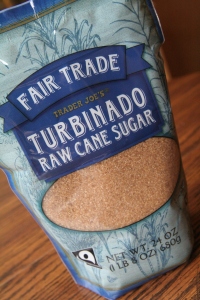
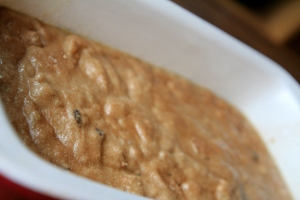



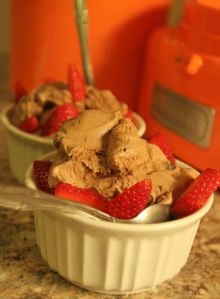

For me, honestly, it’s baked goods. Doughnuts especially. Old fashioned cake donuts, they get me every time, any bakery case can pull me in like a tractor beam! I am one who fights more than anything, the instant gratification, that I know some foods have the power to give me instant energy and a chocolate and coconut covered outlook on life. But I also know that this sugar high, while instantaneous, is short lived. Donuts may be my most unhealthy weakness.
I agree with Grayson, Doughnuts are definitely at the top of the list, followed by any number of baked goods if I allow myself to browse the bakery department at the grocery store. My alternative, I don’t bring home donuts and I keep a stock of granola bars in the house, especially ones with nuts. It’s funny that while I often crave chocolate, I do not particularly like it in granola bars.